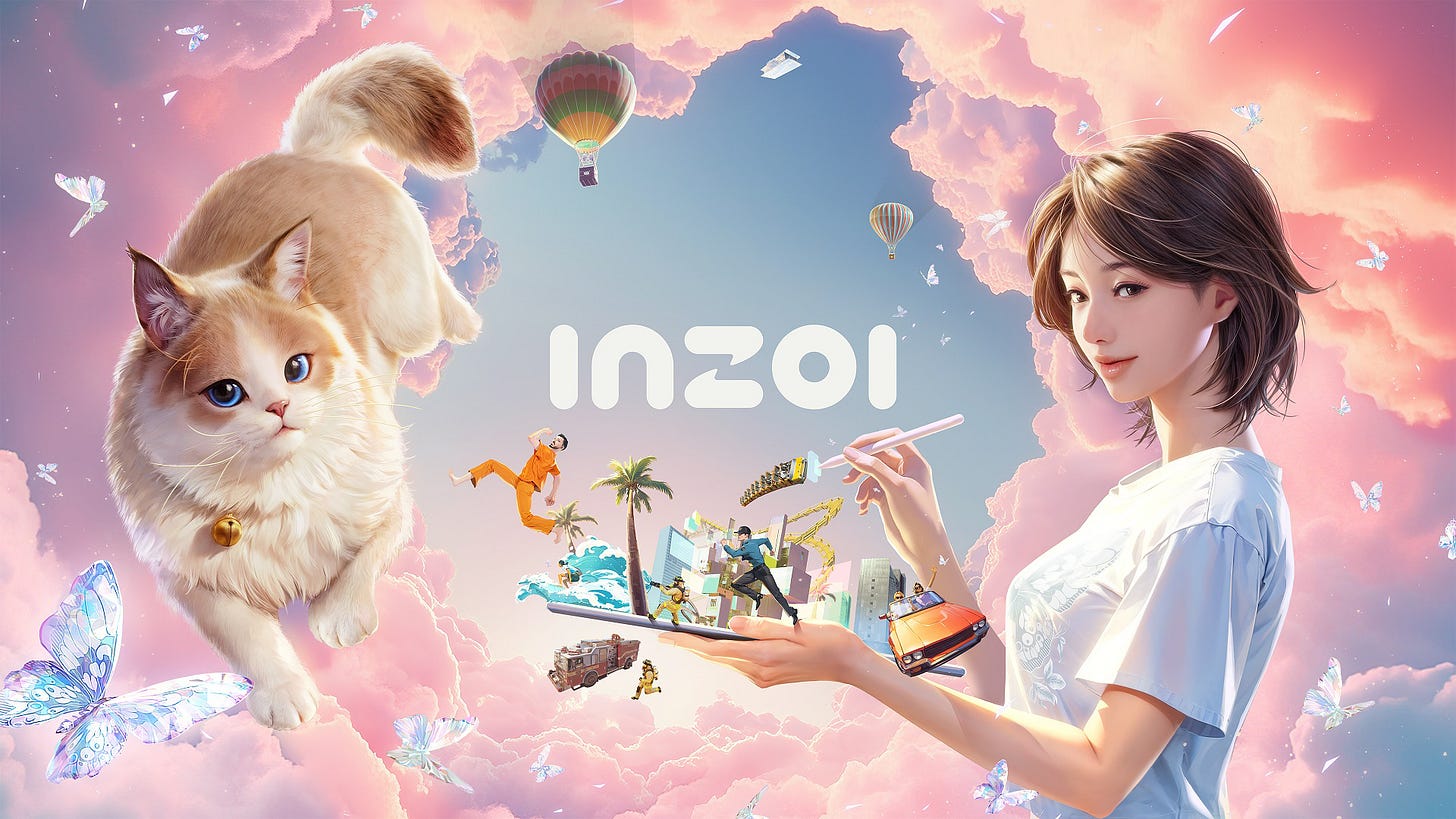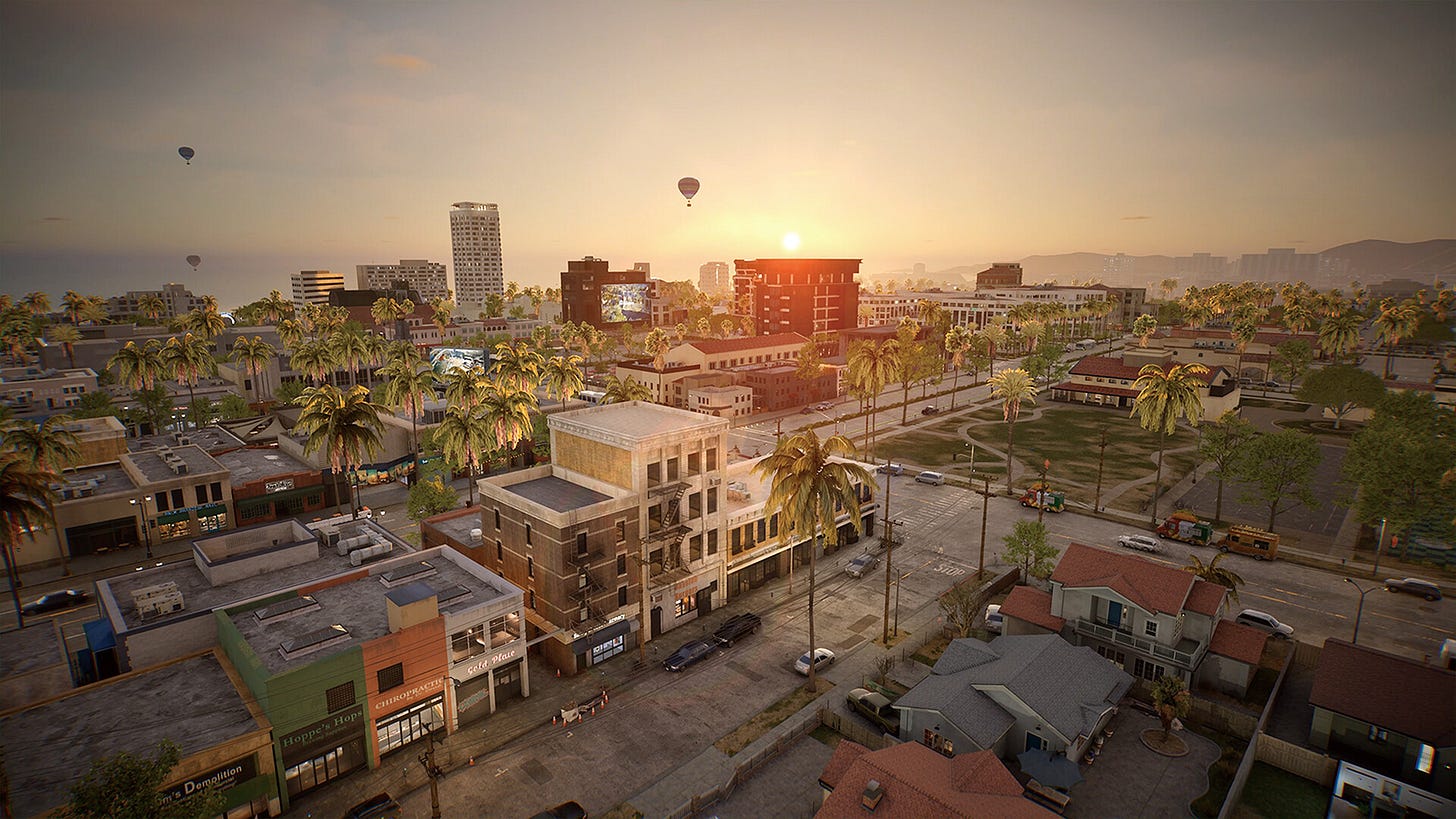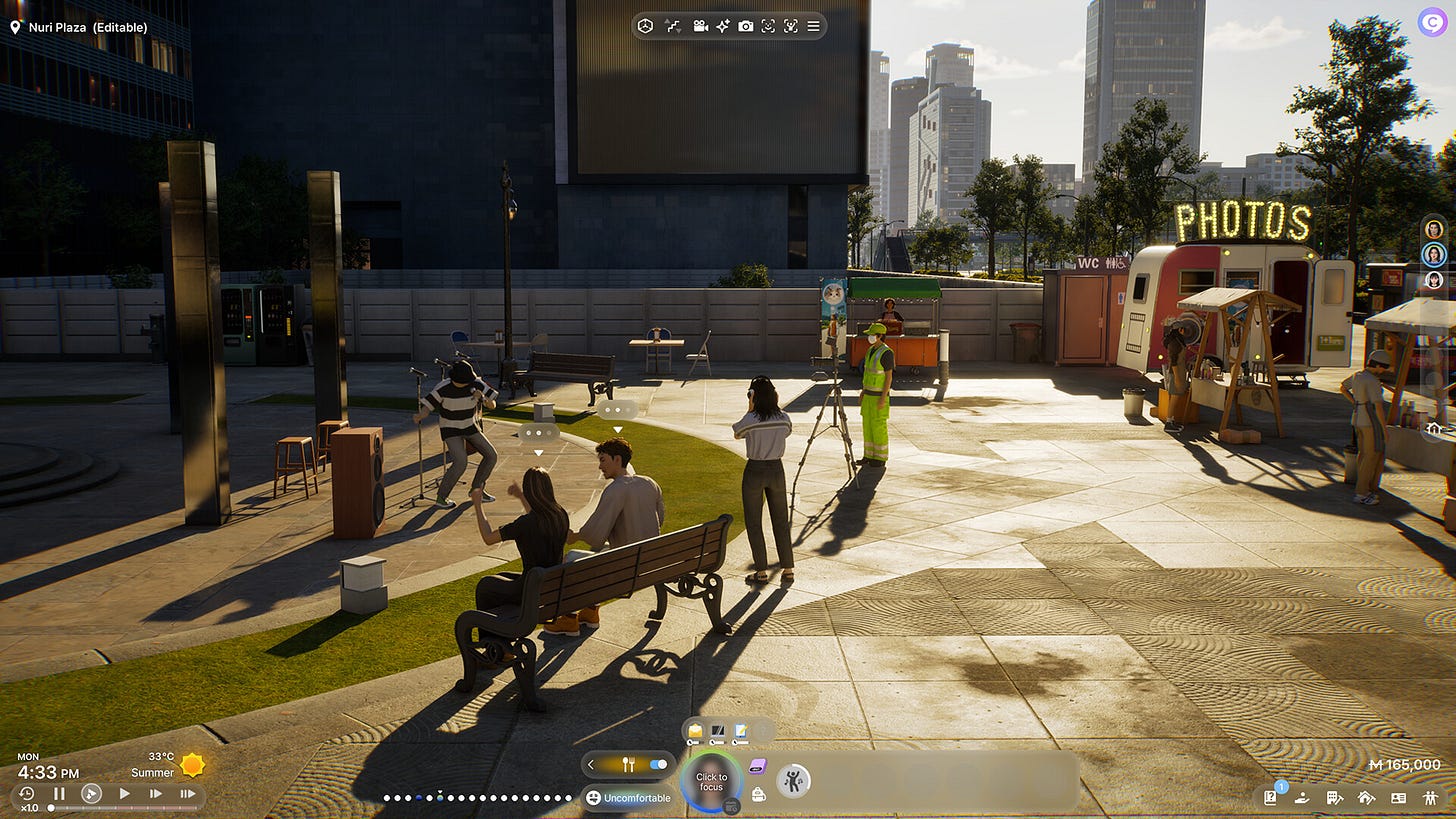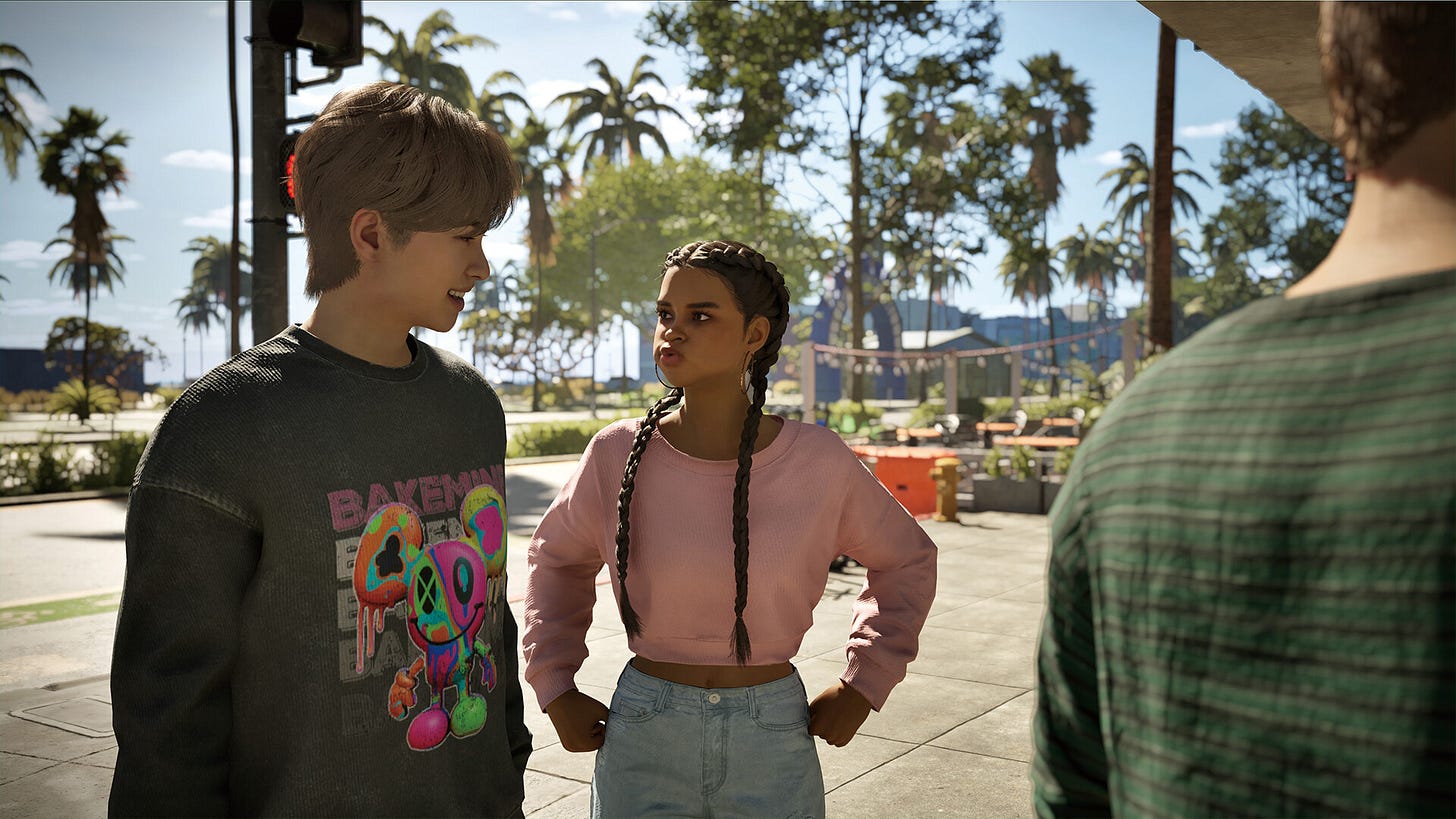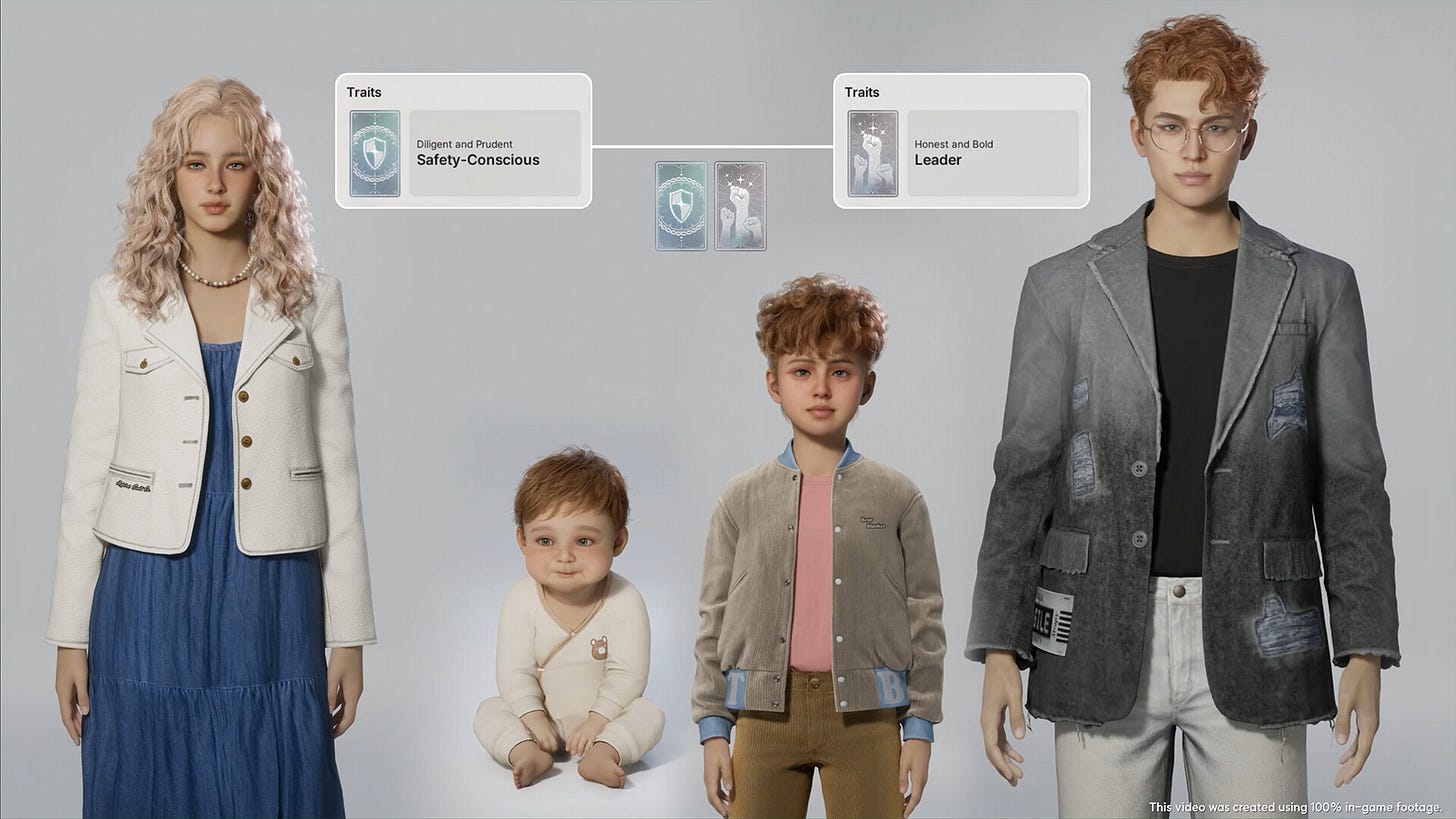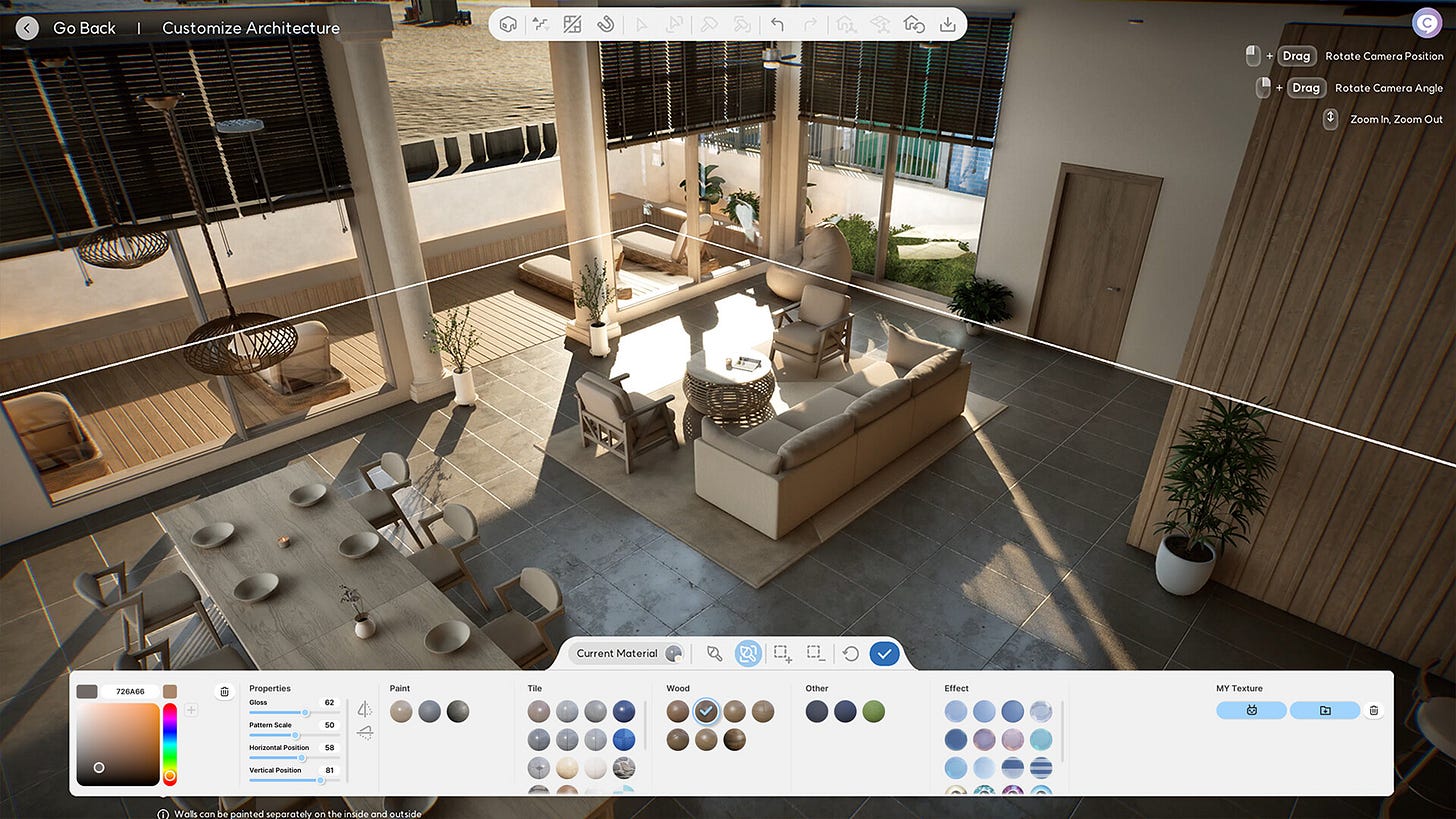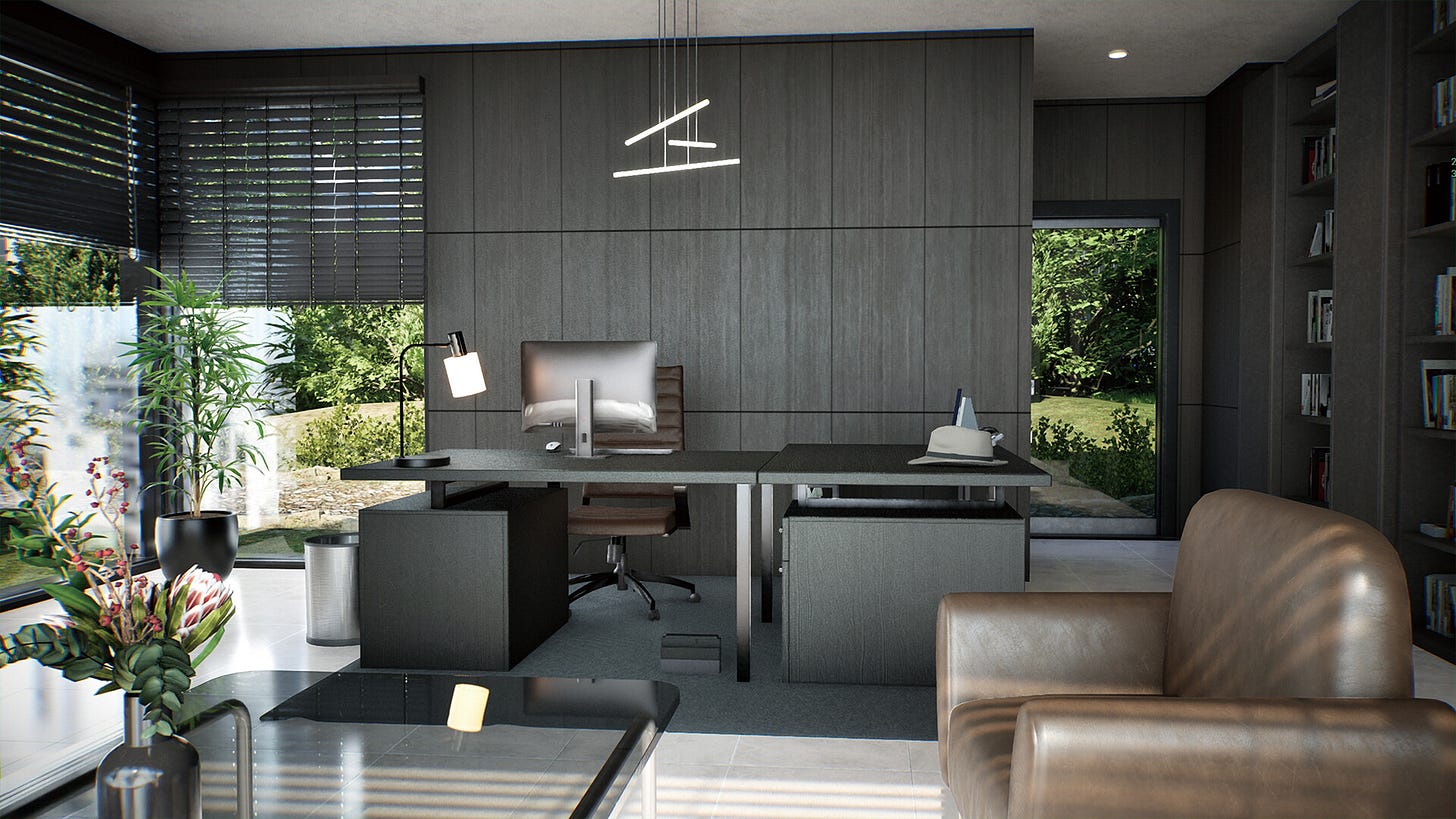Introduction: A Life Sim with Grand Ambitions
InZOI feels like being handed the keys to a dazzling city—brimming with promise, packed with tools to craft your ideal life, but strangely hushed when you step inside.
Krafton’s life sim, built on Unreal Engine 5, sets out to topple The Sims with breathtaking visuals and boundless customisation. I dove in expecting to lose myself in a vibrant virtual world, eager to weave epic tales for my Zois.
Whilst the polish is undeniable, I couldn’t shake the sense that something was lacking—a spark to make the world feel truly alive.
Let’s explore what makes InZOI shine and where it’s still finding its footing.
Graphics and Performance: A Visual Triumph
On my setup (RTX 3080, i9 11900H, 32GB RAM), InZOI is a proper stunner.
Cranked to Ultra, it delivers Seoul-inspired cityscapes and coastal retreats with such detail you’ll pause just to watch sunlight shimmer on a rooftop.
Dowon’s neon-lit alleys and Bliss Bay’s golden beaches feel alive, with NPCs weaving through crowds and clouds drifting across the sky.
Unlike some open-world titles I’ve played that judder under strain, InZOI ran flawlessly, even when I filled a plaza with custom props.
Character models are a standout—every Zoi looks ready for a fashion spread.
I spent hours tweaking Jihoon, my musician Zoi, to perfect his retro vibe, right down to his scuffed boots.
The only niggle? Basic furniture textures, like a bog-standard sofa, feel a bit naff compared to the world’s brilliance.
You can opt for 30fps for maximum detail or 60fps for buttery-smooth gameplay—I stuck with 60fps, as the fluidity made wandering Dowon’s streets a delight.
It’s a technical marvel, holding its own against any AAA visuals, with a vibrancy that begs you to explore.
Watching a Sunset over the ocean, as your Zoi strums a guitar on the Pier, has never looked better.
Gameplay: A Routine Lacking Rhythm
Here’s where InZOI trips up.
The core loop—live, work, socialise—should be a playground, but it feels like a to-do list.
I set Jihoon up as a street performer, picturing him strumming to a growing crowd, perhaps gaining a fan or two. Instead, he looped the same guitar riff for donkey’s years, with no sense of progress or reward.
I tried enrolling him in music school, hoping for a montage of scales and jam sessions, but he just vanished inside a building for hours, leaving me twiddling my thumbs.
After 20 hours, I realised I’d spent half my time faffing about in menus instead of living Jihoon’s life.
Customisation keeps things afloat.
The build mode let me transform Jihoon’s loft into a cosy music den, complete with a vintage record player and fairy lights.
You can reshape entire neighbourhoods—say, plonking a quirky food truck by a park or, yes, a random fountain for flair. But these toys don’t hide the slog.
Even at max speed, mundane tasks like sleeping dragged so long I could’ve practised chords myself.
It’s welcoming for newcomers, with simple menus and no steep learning curve, but there’s not much depth or surprise to grip you.
Story and World: Gorgeous but Empty
InZOI doesn’t chase a grand narrative, which suits a life sim—your Zois’ lives are the story. You’re a god crafting their world, not following a script. But the world, whilst stunning, lacks soul.
Dowon’s streets hum with NPCs, yet they rarely break from routine.
I wanted Jihoon’s busking to spark a chance encounter—maybe a passerby joining in—but everyone just toddled past.
Bliss Bay’s sunsets are gorgeous, with waves lapping gently, but the vibe feels static, missing the chaotic energy of other open worlds I’ve roamed.
The world’s flexibility is a plus—you can hop between families or redesign a plaza on a whim, all without a loading screen.
I had a blast grunging up Jihoon’s street to match his indie aesthetic, swapping clean pavements for cracked ones. But these changes don’t ripple outward—no one comments on the vibe shift, and gameplay stays the same.
Unlike historical epics with rich lore, InZOI leans on your imagination, which is freeing but lonely without more world-driven events.
The character creator is a amazing, letting me fuss over Jihoon’s scarf collection, but it can’t carry the whole experience.
Social Interactions: Strangers in a Crowd
Socialising is InZOI’s weakest link.
I introduced Jihoon to Min, a drummer with a sharp edge, hoping for a rivalry over music tastes. One chat about jazz versus synth-pop got my hopes up, with Jihoon gesturing passionately, but most talks fizzled into bland exchanges like “Nice day, innit?”.
Despite meters tracking friendship or romance, conversations feel shallow, lacking the emotional heft of bonds in other story-driven games.
You can steer Zoi lives—say, nudging Min to challenge Jihoon’s gigs—but the system needs more bite.
Random traits, like Min hating loud guitars, add a flicker of personality, but without dynamic events, like a surprise jam session, it’s hard to care.
The world looks busy, with NPCs filling cafés and parks, but they seem more like a bland backdrop than part of the actual cast.
No matter how many different traits each Zoi had, it always seemed to just be a trivial ‘Good’ or ‘Bad’ reaction, without much latitude.
Customisation and Housing: Your Personal Stage
If InZOI has a killer feature, it’s customisation.
Beyond Jihoon’s look, I sank hours into his loft, crafting a vibe with a guitar nook and custom wall art I designed.
The build mode is slick—place items anywhere, tweak colours, add personal touches like a neon sign. It’s more intuitive than decorating in other sims, though the furniture catalogue feels thin, with too many basic chairs and not enough pizzazz.
I’d love more quirky options, like a knackered amp for Jihoon’s space.
You can overhaul entire regions, turning Dowon into a hipster haven with art stalls or Bliss Bay into a surf shack paradise. It’s empowering, almost godlike, but without deeper gameplay to tie it to, it’s like staging a play no one attends.
Still, seeing Jihoon’s loft glow at night was a high point, and I’ve seen gorgeous creations online—think penthouses with indoor waterfalls—that hint at the potential here.
Multiplayer and Monetisation: Solo for Now
InZOI’s early access is a solo affair, there’s no hint of multiplayer yet, which makes sense—Krafton seems focused on nailing the basics.
Monetisation is barely a whisper; I didn’t spot any cosmetic shops or paywalls, just a promise of free updates down the line.
It’s refreshing, letting you sink into Jihoon’s world without a nudge to buy a fancier sofa. For now, it’s you and your Zois, crafting stories in a private sandbox.
Music and Vibes: A Muted Soundtrack
The soundtrack is pleasant but fades into the background—soft ambient tracks that don’t linger like the epic scores in other games. You can swap in custom BGM for your home, which I loved—Jihoon’s loft got a lo-fi playlist that matched his chill vibe.
The overall mood is relaxed, maybe too relaxed, missing the bold energy of titles with punchier atmospheres.
Strolling Dowon at dusk, with streetlights flickering on, feels cinematic, but a stronger score could’ve made it unforgettable.
Final Verdict: A Canvas Awaiting Colour
In summary, InZOI is a paradox—a life sim with dazzling tools but no spark to bring it alive. Its visuals and customisation are top-notch, outshining many blockbusters, but the gameplay loop feels like a demo.
Newcomers will love how easy it is to jump in; genre fans, like me, might pine for more depth.
After 20 hours, I’m still fiddling with Jihoon’s loft, but I’m not invested in his story.
It’s early access, so there’s hope—Krafton has a solid foundation to build on.
For now, InZOI’s a beautiful shell waiting for a soul.
If you’re into crafting over narrative, it’s worth a punt.
Otherwise, hold off until the world starts singing.




